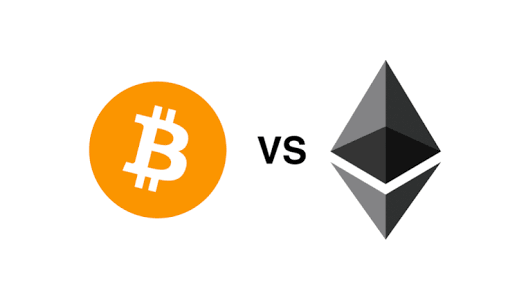
There are many similarities between the Bitcoin and Ethereum Blockchains. Both are public Blockchain, both use Proof-of-Work for consensus and both have a raging, super-popular token doubling up as a cryptocurrency.
But they differ too- let’s learn more about celebrate the differences! Here we go:
1.Block-Size
In Bitcoin, the maximum block size is specified in bytes (currently 1 MB) whereas Ethereum’s block size is based on complexity of contracts being run– known as Block Gas limit (BGL). BGL can vary slightly from block to block. Right now, most Ethereum blocks are under 2 KB in size.
2.Block Time
In Ethereum, the time between generation of new blocks is around 15 seconds, compared with Bitcoin’s ~10 minutes. This means that an Ethereum transaction would be recorded into Ethereum’s blockchain much faster than it would take a Bitcoin transaction to get into Bitcoin’s blockchain.
3.Scripting Environment
Compared to Bitcoin’s primitive scripting language, Ethereum is more advanced because computer programs called Smart Contracts can be run on it.
Also Ethereum is Turing-complete i.e., it can be programmed to solve any kind of computational problems. In contrast, Bitcoin does not have this capability. It would be fair to say it is just limited to secure transfer of digital currency between peers.
4.Transaction Costs
Bitcoin transactions cost can be set by the initiator of the transaction depending on whether she wants the network to take her transaction up with higher priority. But Ethereum has a different method for costing transactions depending on their computational complexity and storage needs. This computational cost is called Gas in Ethereum.
5.Mining Rewards
Mining is the process of creating new blocks in blockchain. Since mining involves a lot of computational power and time, rewards are given for each new block mined.
Currently each block created in Bitcoin creates 12.5 new BTC. This reward will be halved for every 210000 blocks created. In addition to the block reward, miner receives fees from all the transactions included in the block.
Whereas in Ethereum, the miner of a block receives
5 new ETH per block plus
transaction costs from contracts that were run during the block creation.
In Ethereum, this block reward is constant.
6.Orphan and Uncle Blocks
When two valid blocks are mined at approximately at the same time, they both point to the same parent but some of the miners see one and the rest see other. Thus the network will be parted in two and would be working on two different blockchains. This conflict is resolved using ‘Longest Chain Rule’ both in Bitcoin and Ethereum. But there is an important difference between the two.
The blocks which do not form part of main chain are called ‘orphans’ in Bitcoin and are entirely discarded. Whereas in Ethereum they are called ‘uncles’ and can be referenced by later blocks. Indeed, Ethereum even rewards the miners for creating and referencing ‘Uncle Blocks’.
In Ethereum, each uncle block created is rewarded with 4.375 ETH (7/8th of the full 5 ETH reward). This is called the uncle reward. Currently around 500 uncles are created per day, adding an additional 2,000 ETH into circulation per day.
Also 0.15625 ETH is rewarded for referencing up to 2 recent uncle blocks (1/32 of a block reward ie 1/32 x 5 ETH = 0.15625 new ETH per uncle).
To learn more about the Ethereum blockchain and how to develop decentralized applications on the Ethereum blockchain, visit Blockchain Semantics Ethereum Certification.
Hi! I am a robot. I just upvoted you! I found similar content that readers might be interested in:
https://www.quora.com/How-is-the-Ethereum-blockchain-different-from-the-Bitcoin-blockchain